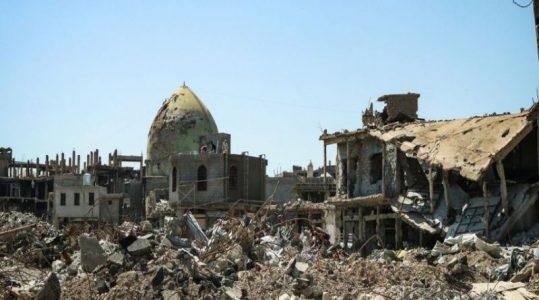
UN: Despite falling attacks ISIS terrorist group remain global threat
“Despite the more concealed or locally embedded activities of ISIL cells, its central leadership retains an influence and maintains an intent to generate internationally-directed attacks and thereby still plays an important role in advancing the group’s objectives,” explained Vladimir Voronkov, who heads the UN Office of Counter-Terrorism (UNOCT).
“This is exacerbated by the challenge of foreign terrorist fighters who either are leaving conflict zones, or those who are returning or who are about to be released from prison. In this context, radicalization in prison settings, is seen as a particular challenge in Europe and Iraq,” Under-Secretary-General Voronkov added.
He said that so-called “frustrated travelers” were adding to the complexity of the threat, namely fighters who’d failed to reach main battlegrounds, but been diverted instead elsewhere, either by ISIL commanders or of their own volition.
The report notes that the “centre of gravity” of the organization, known in the Arab world as Da’esh, remains in Iraq and Syria, with up to 18,000 remaining in the ranks, including some 3,000 foreign fighters.
“In terms of ISIL’s financial strength, the report notes that despite some loss of revenue due to territorial setbacks, ISIL could sustain its operations through accessible reserves, in cash or investment in businesses, ranging between $50 and $300 million. ISIL cells are also reported to generate revenue through criminal activities”, explained Mr. Voronkov.
The document, the eighth report on ISIL – which proclaimed its so-called caliphate across northern Syria and Iraq in 2014 – was prepared on behalf of the UN Secretary-General by the Counter-Terrorism Committee Executive Directorate (CTED) and the Analytical Support and Sanctions Monitoring Team of the 1267/1989/2253 ISIL (Da’esh) and Al-Qaida Sanctions Committee, in close collaboration with the UNOCT and other UN entities and international organisations.
After being driven from its city strongholds of Mosul and Raqqa, intense fighting in recent months has left Da’esh defending a small enclave against US-backed fighters in eastern Syria, close to the Iraqi border. According to news reports, around 600 terrorist fighters continue to battle with coalition forces, which have labelled this the “final battle” to crush ISIL.
The UN analysis shows that Member States continue to face tremendous challenges across the world in tackling the threats posed by ISIL, with the threat level continuing to expand. This is especially true in North, West and East Africa as well as in Central Asia. Training camps have been identified in Afghanistan, and in South-East Asia, where women and youth are increasingly mobilized for terrorist operations across the region.
The head of CTED, Michele Coninsx, highlighted three of those major challenges faced by Member States:
-The “destructive legacy” left in Syria and Iraq, most noticeable in the high number of families who remain internally-displaced due to the destruction of homes and infrastructure overall: She noted that “reconstruction will take many years and will require significant resources, as will restoring and reconciling communities after so many years of conflict.”
-The growth in the number of terrorist suspects and offenders in custody: The risk posed by such prisoners is difficult to assess and manage.
-ISIL’s ability to exploit new technologies and find innovative ways to finance itself and find new recruits: Ms. Coninsx noted for example the risks linked to anonymous technologies like blockchain and cryptocurrencies, and other internet-based ways of avoiding detection.





